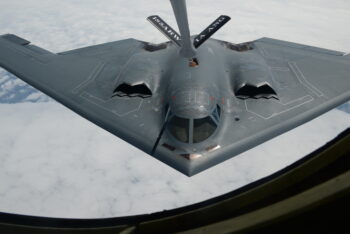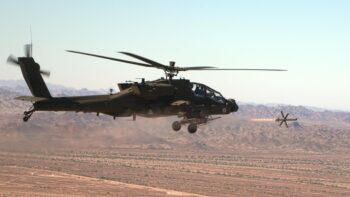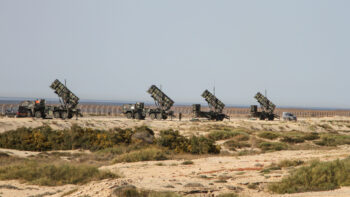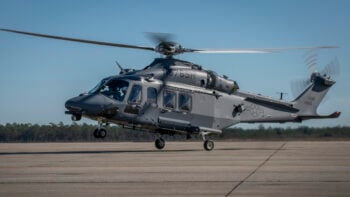
The military’s metaverse could include the experience of flying fighter jets, like these F-35s. (Graphic by Breaking Defense, original photo via DVIDS)
I/ITSEC 2023 — The US Air Force is undergoing a “transformational moment” in how it handles pilot training, with technological achievements from adversaries forcing the service to lean more into synthetic environments, a service official told Breaking Defense on Tuesday.
Adversaries have “caught up with us in many respects and maybe even in some respects are leading from a technology perspective,” Col. Matt Ryan, senior materiel leader for the Air Force Life Cycle Management Center’s Simulators Division told Breaking Defense in an interview at I/ITSEC 2023 on Nov. 28.
As a result, the Air Force is looking to integrate more advanced and emerging technologies into their future training and operations. And while live training on a plane is never going to go away, Ryan said expanding the use of synthetic training is going to be important as the service moves away from the almost-unlimited air dominance of the War on Terror and into more complicated scenarios with Russia and China.
The two biggest challenges the service faces when it comes to training are interoperability and reducing the amount of training time needed, and Ryan said that many systems the service depends on “weren’t built in an era where we were thinking that way.”
“Future combat employment is about kill chains and kill webs, it’s about systems of systems warfare,” he said. “It’s going to be a whole series of capabilities, overhead, multi-domain … with communications systems tying us together and then humans at the appropriate places in the loop to make decisions happen. But not too many humans, to where you’re slowing things down.”
The number one priority Ryan’s office is targeting to field and scale up is the Joint Simulation Environment, or JSE, a joint venture between the Air Force and Navy meant to revolutionize the way training is done in the future.
Ryan said the Naval Air Station Patuxent River in Maryland completed their “runs for score” in September and “now we’re really starting to turn our attention to integrating other platforms in addition to the F-35” like the F-22 aircraft.
“Now we’ll have both of our fifth-gen platforms together where we can do Air force and Navy, Marine Corps training together with the two platforms,” he said. “What we’re working on specifically with the Air Force is to grow that and have that at Nellis Air Force Base … And I think right now, what the Air Force has to figure out is, what do we move? What are the right pieces to move from open air over to these synthetic environments. And then how do we tailor those synthetic environments to have the right level of fidelity for those right activities and those right training tasks.”
A major advancement in the program is a recently fielded collaborative development environment where the Air Force, Navy and industry “can all be working in the same development environment together collaborating on a piece of code, for instance, right to develop an app for JSE,” he said. “So that’s absolutely the future of where we’ve got to get to.”
The collaborative development environment is currently fielded in an unclassified capacity and the service wants to grow the effort this fiscal year — although any progress on that is likely stalled out thanks to the Pentagon operating under a Continuing Resolution until the start of February. Ryan added the Air Force is also looking at integrating artificial intelligence into the JSE and how it can be utilized for data and predictive analytics.
While the service right now is “just scratching the surface” when it comes to adopting modern technologies for learning and training capabilities, Ryan said he expects the service to grow these areas in the future.






















